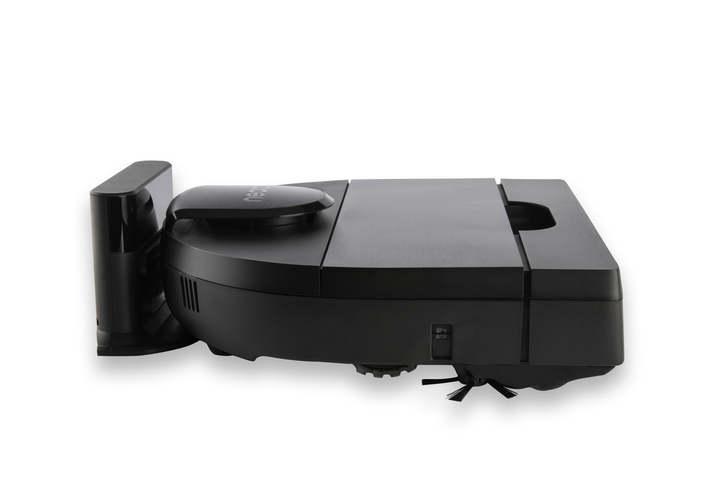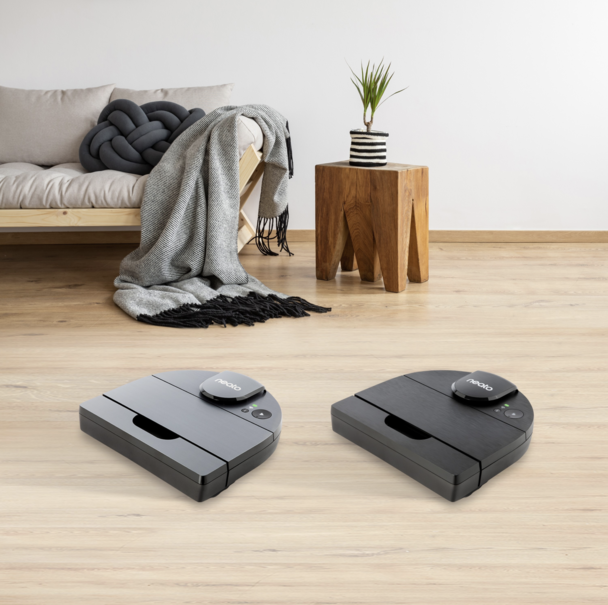Neato Robotics’s Thomas Nedder is clear about the awareness path his company’s premium line of intelligent, robotic vacuums is successfully forging with consumers: “Our domains are cleaning and navigation,” the CEO told Dealerscope, in wake of the news that the Models D10 and D9 are now available globally at retail, joining the previously released Model D8.

They are domains Neato’s products strive to dominate, in a world market of robotic vacuums that has more than doubled to 19 million unit shipments between 2017 and 2020. And household penetration is growing exponentially, as consumers discover the myriad benefits of this appliance category.
Neato uses a pioneering approach to robotic vacuums — laser navigation — versus cameras, to scan, scope out and create a floorplan for targeted “zone” cleaning. That makes these robotic vacuums the first to support “no-go” zones that limit the cleaning areas to where the homeowner chooses – and keep other areas (such as pet feeding bowls) off the vacuum’s radar. And it’s also an engineering choice that offers the side benefit of security for the homeowner, because with lasers, “we don’t use cameras to identify a room and send it to the cloud; the laser mapping the floorplan offers a privacy aspect,” Nedder says.
The vacuums use range sensors with the same type of LiDAR technology that is used in some autonomous cars, the company says, supporting the fourth-generation built-in SLAM (Simultaneous Location and Mapping) navigation. This technology, Neato says, works just as effectively in low or dark lighting as in full lighting conditions.
Neato Robotics is now marketing its ninth-generation products. The Neato D10 flagship ($799), designed for larger homes, introduces an onboard true HEPA filter that can detect and capture 0.3-micron particles. It provides a 300-minute run time covering up to 2,700 square feet between recharges. The D9 ($699), for medium-size homes, provides 200 minutes of run time and covers 1,600 square feet between recharges, and the D8 ($599) offers 100 minutes of run time and covers 750 square feet on a single charge. All three models offer voice command, can pick up debris on hard surfaces on a single pass, and all have an “auto recharge and resume” feature that allows them to calculate what amount of charge is needed to finish a job, and then, if needed, to recharge to that level and reappear to wrap up the task.
Neato models’ unique “D” shape, as well as their brushed-finish aesthetics, are things that also set the products apart visually on retail sales floors. The design also enables the vacuums to reach areas where round robots can’t get to, such as edges and corners. Larger, more powerful blowers, brushes, filters, and dust bins than are found on competitive products are also well accommodated within the D-shape chassis.
Nedder says the company is proud of its roster of “firsts” in the industry — including having been the first to introduce Wi-Fi-connected products easily controllable through an app, and with the added benefit of smartwatch support. He also touts Neato’s unique 24/7 premium customer support, via both phone and chat, and its availability worldwide of return and repair centers.
As “smart” as they already are, the vacuums will be able to gain additional “smarts” via firmware updates down the road. “Our platform allows us to add features and functionalities quickly in the future,” Nedder says. “Our mission is to improve the customer experience of everyday living through robotics.”

Nancy is a contributing editor for Dealerscope.















